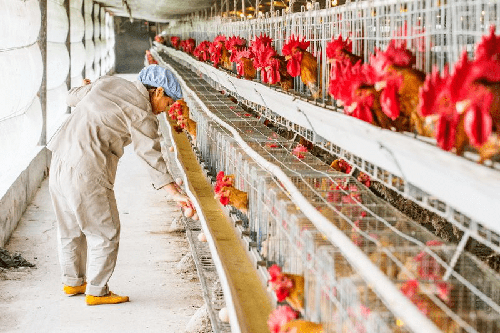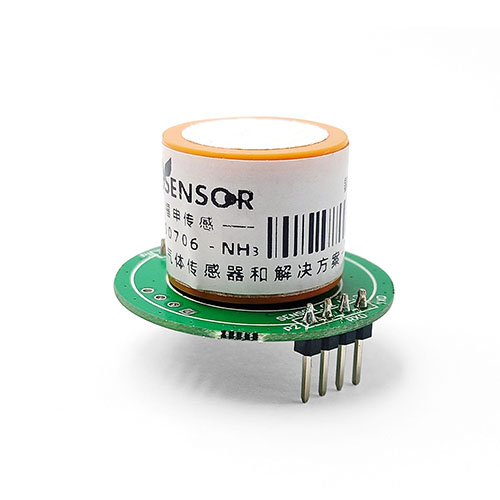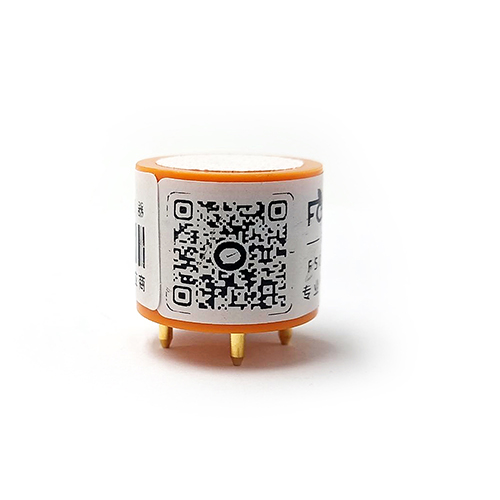Ammonia sensor for poultry
Ammonia sensor for poultry plays an important role in livestock and poultry breeding. It is an advanced device that can detect ammonia concentration in the livestock environment. Ammonia is a common harmful gas in poultry breeding. High concentrations of ammonia are not only harmful to the health of poultry and livestock, but also easily lead to environmental pollution in the farm. Therefore, the introduction of Ammonia sensor for poultry can not only monitor ammonia concentration in a timely manner, but also help farmers take effective measures to ensure the growth and health of livestock and improve breeding efficiency.

Ammonia sensor for poultry working principle
Ammonia sensor for poultry generally uses chemical sensing technology to measure ammonia concentration by reacting with ammonia to generate a specific signal. Sensors usually have the characteristics of high sensitivity and fast response, and can accurately detect changes in ammonia concentration in the environment in a short time. This provides farmers with timely and accurate data, allowing them to respond quickly and take targeted control measures to effectively avoid livestock health problems caused by excessive ammonia concentrations.
Ammonia sensor for poultry application features
The application of Ammonia sensor for poultry is of great significance to the breeding industry. By monitoring ammonia concentration in real time, farmers can understand the air quality in poultry houses and avoid health problems such as respiratory diseases caused by excessive ammonia concentration. In addition, precise control of ammonia concentration can also reduce odor emissions in the breeding environment, reduce pollution to the surrounding environment, and help build a green and environmentally friendly breeding farm.
The introduction of Ammonia sensor for poultry can also improve breeding efficiency. By monitoring ammonia concentration, farmers can scientifically and rationally adjust the ventilation equipment in the breeding houses to maintain appropriate ammonia concentration levels. This helps to increase the growth rate of livestock, reduce feed waste, and improve the economic benefits of breeding. In addition, timely detection and treatment of abnormal ammonia concentrations can also reduce the disease rate of poultry and livestock, reduce breeding risks, and ensure stable production.
In practical applications, Ammonia sensor for poultry can also be combined with intelligent breeding systems to achieve remote monitoring and data management. Farmers can check the changing trend of ammonia concentration anytime and anywhere through their mobile phones or computers, and grasp the status of the breeding environment in a timely manner. This provides a more convenient and efficient means for breeding management, helps achieve scientific and refined management, and improves breeding efficiency.
Ammonia sensor for poultry development
The application of Ammonia sensor for poultry still faces some challenges. First of all, the accuracy and stability of sensors need to be continuously improved to cope with the complex and changeable breeding environment. Secondly, the cost issue is also one of the factors restricting the popularization of sensors. It is necessary to gradually reduce the price of the product while technological innovation and production scale expansion, so that it can better adapt to the needs of farms of different sizes.
The introduction of Ammonia sensor for poultry has brought great changes to the livestock and poultry breeding industry. By monitoring the ammonia concentration in real time, the quality of the breeding environment is improved, the harm of ammonia to the health of poultry and livestock is effectively prevented, and the farmers are provided with more scientific and precise management methods. In the future, with the continuous advancement of technology and the promotion of applications, it is believed that Ammonia sensor for poultry will play a more important role in livestock and poultry breeding and contribute more to the sustainable development of the industry.







